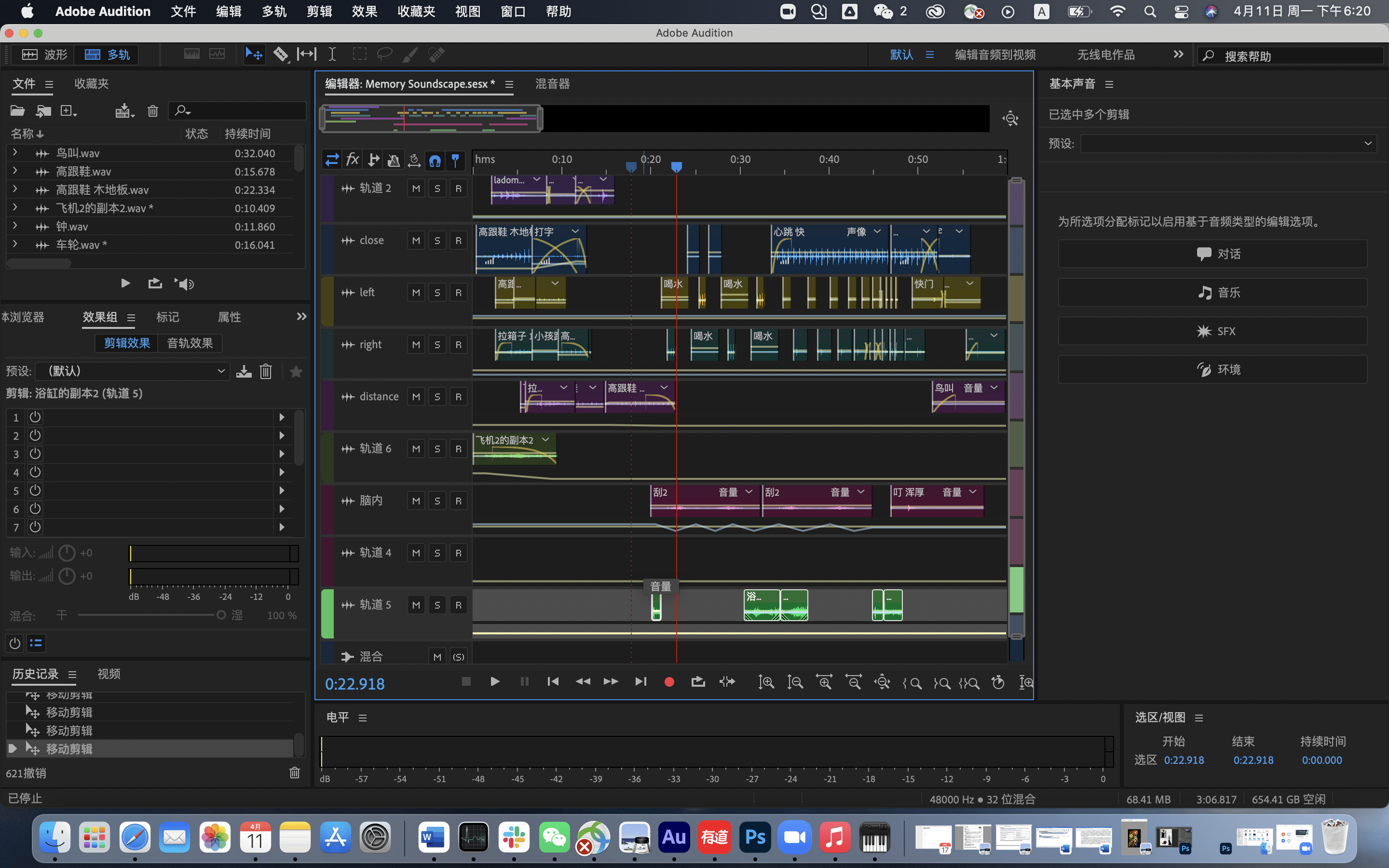Click HERE for the Soundscape
—Concept—
The memory I chose was my experience of leaving the country alone when I was 10 years old. When I got off the plane and was about to exit Australian customs, I was stopped by the staff and taken to a small room. This was because my passport photo (taken when I was in kindergarten) had changed so much from how I looked then that the staff needed to be sure I was the person. But apparently, when I entered the room, I didn’t know why I was being taken away instead of going through customs with the rest of my classmates without any problems. So I was very nervous and even started to wonder what I would do if I couldn’t leave Australia. My mind went to any horrible scenario I could think of: a person left on a deserted island with only the sea and kangaroos …. I hope to describes how I felt at that time in the memory soundscape.
—Process—
I divided this sound memory into three parts, which I concluded as reality-feeling-reality.
- Reality I
In this section, I chose to portray the scene in the airport just after getting off the plane. The sound of the plane at the beginning was recorded by a coincidence. One night, there were many planes carrying medical personnel and supplies from all over the country to support Shanghai, including military transport planes. Every plane that was going to land at Hongqiao Airport would fly over my house, so I recorded the sound of the planes flying over from my balcony. Then I played the airport arrival cue (6#136) on the piano and walked around the house in different shoes to simulate the sound of different people walking in the airport. I also recorded the sound of pulling a suitcase and putting it on the floor. In this part, I didn’t process these sounds much. What I did do was to noise down the airplane sounds and put the cues into a larger space. For the footsteps and suitcases, I chose to put them in different tracks, adjusting the volume and left and right channels to create a cacophony of sound.In the second half of this panel, I used the sound of typing to depict me being inspected by customs, and ended the scene with a loud slamming sound. - Feeling
In this part, I mainly expressed the fear I felt at that time, a sense of oppression that I was afraid to breathe when I was drowning. I filled the bathtub with water, put the phone in a Ziploc bag and threw it into the water. But I found that this would simultaneously record the sound of plastic being squeezed by water, so I tried to bury my head in the water and spit out the bubbles, which proved to be more effective.I also recorded the sound of drinking water and created a heavy breathing effect by adding reverb. I interspersed this sound effect with wood percussion and metal percussion, placing them in different channels and gradually increasing the frequency as a way to create a sense of space and tension. I also used the sound of metal pot lids and marble table tops scraping, adding reverb and turning down the volume. I wanted to neutralize the sharpness of the percussion through continuity.
- Reality II
This part started with the sound of a shutter, because when the Australian Customs staff asked me a few questions, they quickly confirmed my identity and gave me a new photo for the record. So when the shutter was pressed, I came back to reality from the horrible belief in my head, understood that everything was going well and started to imagine what I would be like in Australia. This part was short, and with the end of the shutter sound was a flurry of bird calls. This is the definition of nature, or xanadu, in my mind.
—Conclusion—
My opinion is roughly in line with the feedback I received. If I had more time, I would enhance the description in the Reality I section. Maybe I would add some vocals and tweak the reverb effects to better portray the spatial feel of the airport and make the scene more realistic.
—Image of Audition—
